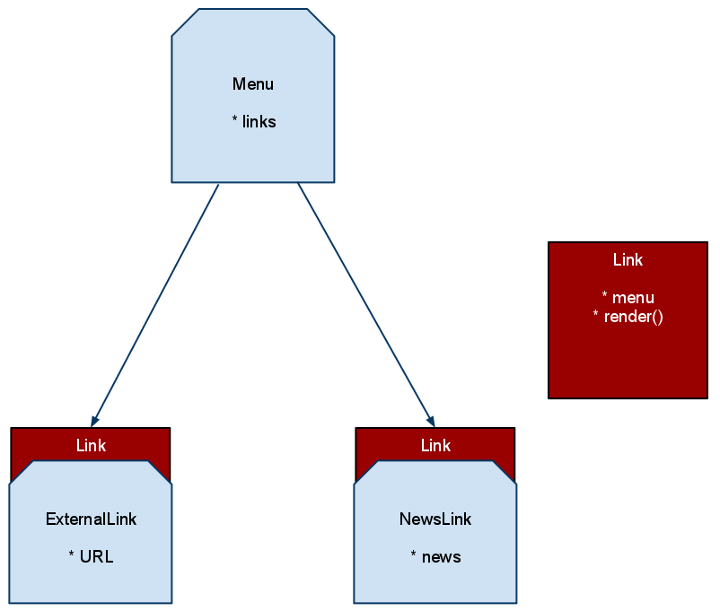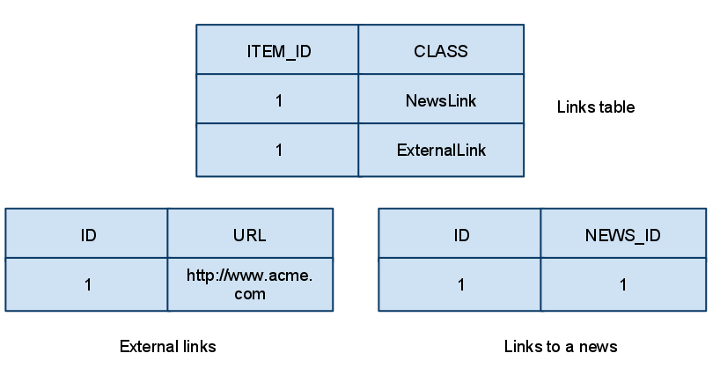Relational sucks, some say.
That’s not fair, because we used it for 30 years and we still need it: but there are some particular cases, out there, that relational, and traditional, databases can’t handle well.
The simple case of the menu
You are building a CMS for your customer, and you just got to the point you need to develop that feature, the menu management system.
A menu is really simple, because it’s an entity connected ( N to N ) with other entities ( menu items ).
So the class diagram is really simple:

But there’s a problem: not all of the menu items are equal; you can link an external URI or a news ( an entity of your model ).
There you basically have 2 choices: to de-normalize your data or to do column aggregation.
Column aggregation
You can simply create a single table, link, with a type column ( the type is usually used in order to work with an ORM ):

but the situation gets ridicolous, although your ORM may work fine with this pattern: as soon as your domain grows and you need to link more entities, you get
1
| |
NULLs in your table, given n as our entities and r the amount of rows.
Another problem is that the relations can be NULLable, and sometimes you can’t afford it.
I like to call tables created with the column aggregation full-o’null, because they suck really much: despite this, they can save your life if you need to develop small system, with a modest domain; plus, they usually help you avoid UNIONs.
De-normalization
Subtitle: how to use a RDBMS as a non relational system.
Sub-subtitle: being an ass with RDBMS.
Normalization is one of the things we try to achieve with relational systems, so dropping it it’s evil: we tend to consider de-normalization good as far as we recognize our data don’t fit well in a RDBMS ( thus the problem it’s not with MySQL or Oracle, it’s our fault ).
But sometimes we like being asses, and we go for disrupting our relational DB.

With this approach, you break the referential integrity, although you have much cleaner tables. I personally don’t like it, but sometimes it’s the fastest and most clever way to go.
A menu, with its complications
So, as you see, a menu ( something that should be really simple ) can undermine our data structure: and since we are used to relational data we think relational DBMS can handle very well this kind of problems.
That’s, obviously, wrong, because relational databases have their limitations: they can’t, for example, deal with semantic inheritance.
The semantic inheritance dilemma
A menu has N links, and each link differs from the others.
So a link basically has a relation with semantics ( “I link in a menu” ) and its inheritance ( links inherit from a base Link class ) but the relational systems aren’t able to provide a way to express a relation, which has a single semantics, with entities from different sources ( = tables, roughly speaking ).
When you work with systems like OrientDB, everything is done for you; being a NoSQL graph db:
- the system doesn’t care, by itself, about referential integrity ( so you feel relieved :–) )
- the system stores a direct link to express the relation
- the system has a native API to easily retrieve linked objects
For example, in OrientDB you can:
1
| |
as you see that returns you records from different classes ( 29:0, 28:0, … ), that you can retrieve with:
1
| |
Yes, awesome.